The (so-called) Hannibal’s Wall (2650 m)Archaeological remains in the EntremontValley –Site discovery
| Access time remaining | Alpage du Cœur – The (so-called) Hannibal’s Wall Approx. 1 hr 30 min |
Alpage du Cœur: the starting point for archaeologists since 2006
Here we are at the Alpage du Cœur. This is where the archaeological expeditions began. Under the direction of the archaeologist Romain Andenmatten, several archaeological interventions were carried out in partnership with the Office cantonal d’Archéologie for Valais from 2006 until 2018. Two preliminary campaigns enabled the site to be mapped (2006, 2008), followed by exploratory digs (2009, 2010), and finally, three more extensive excavation campaigns (2014-2016), followed by some additional investigations (2018), always in summer… which sometimes did not prevent the snow from slowing down the work!
While most of the equipment was brought up on foot during the first campaigns, a heli-lift in 2013 greatly improved living conditions on the site, although they remained quite basic. Fortunately, the presence of a spring close to the excavation site meant that water was available on site.
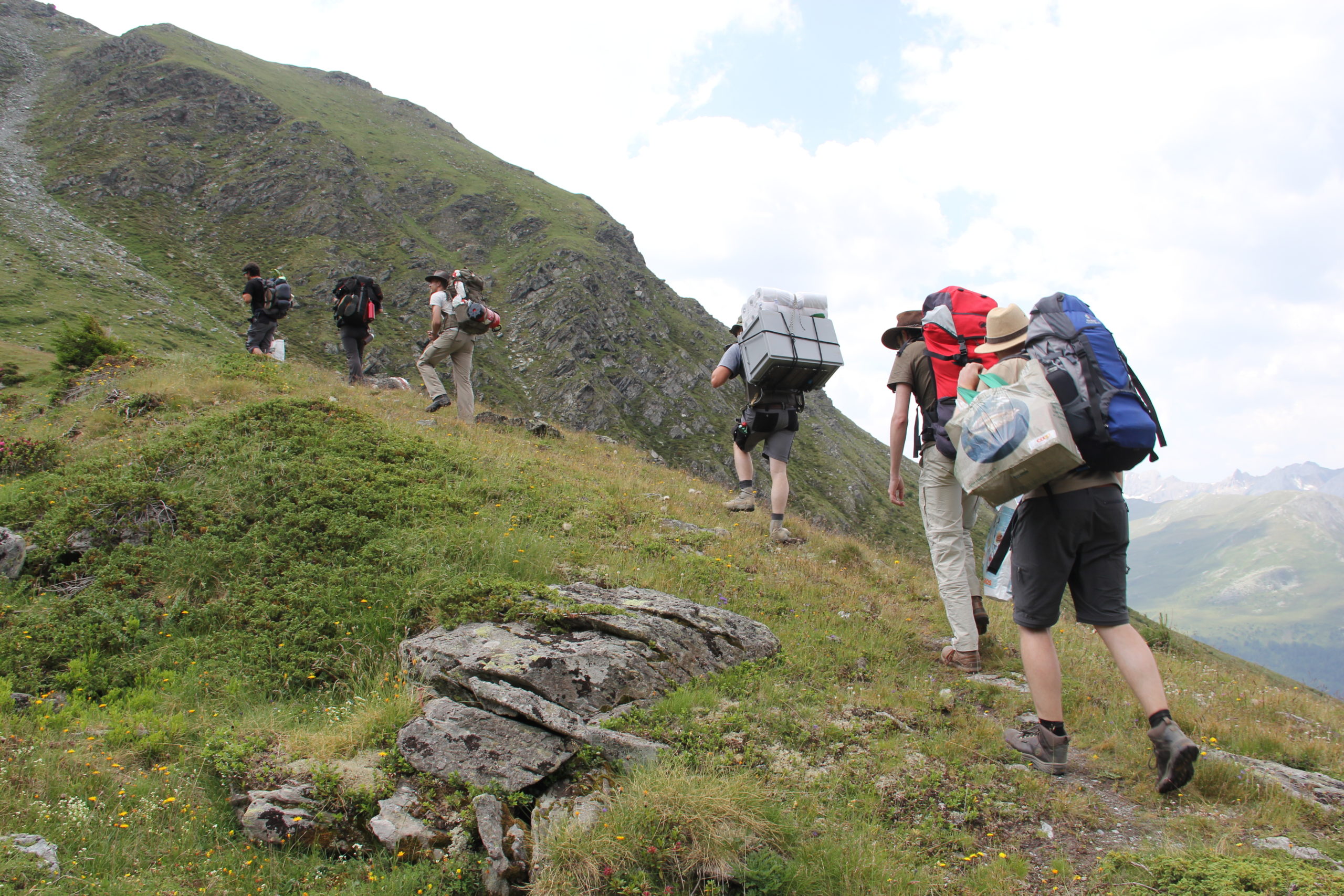
Fig. 1
Ascent to the site in 2015. More working hands means more food to carry. © RAMHA
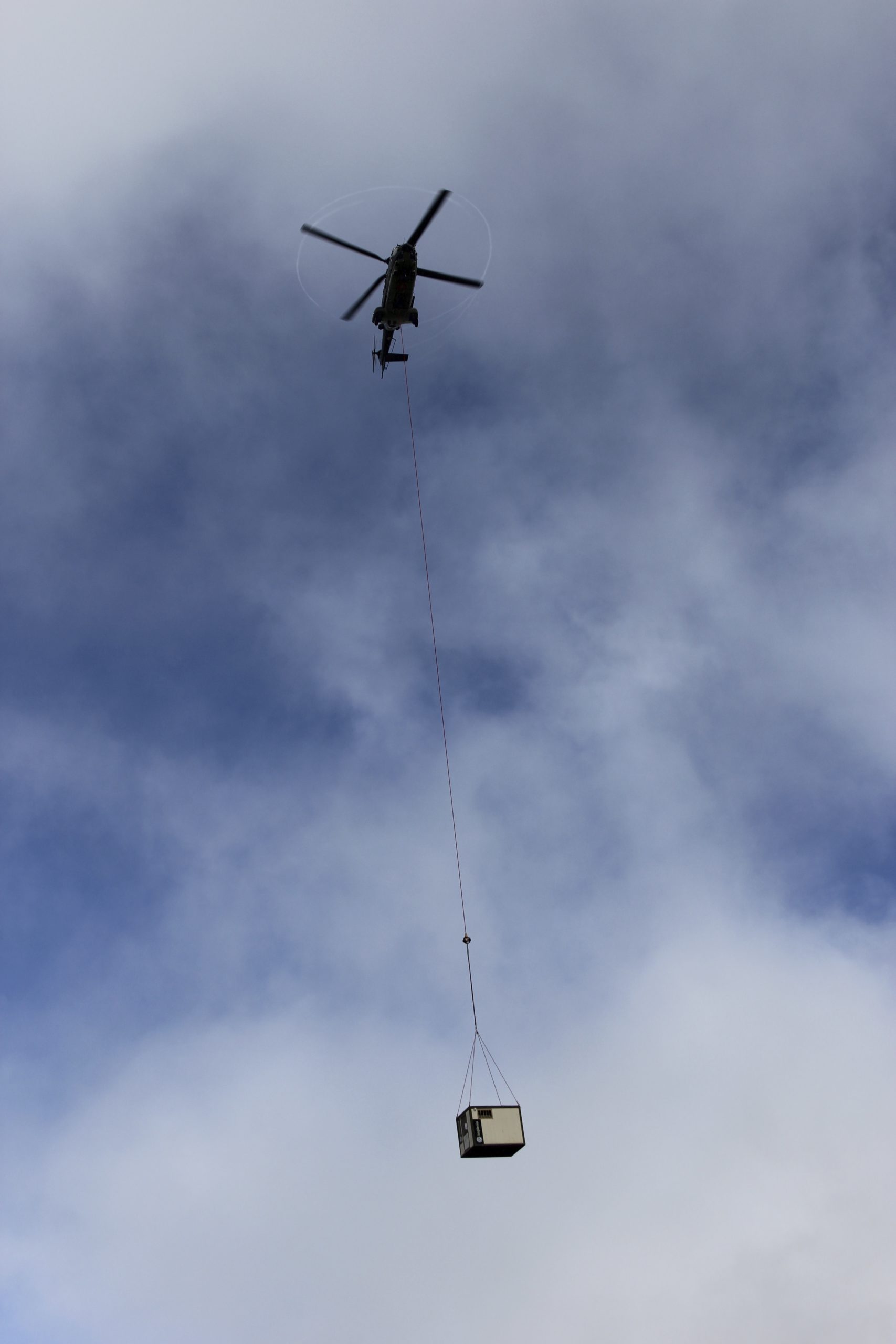
Fig. 2
Helicopter transport of the equipment container. © RAMHA
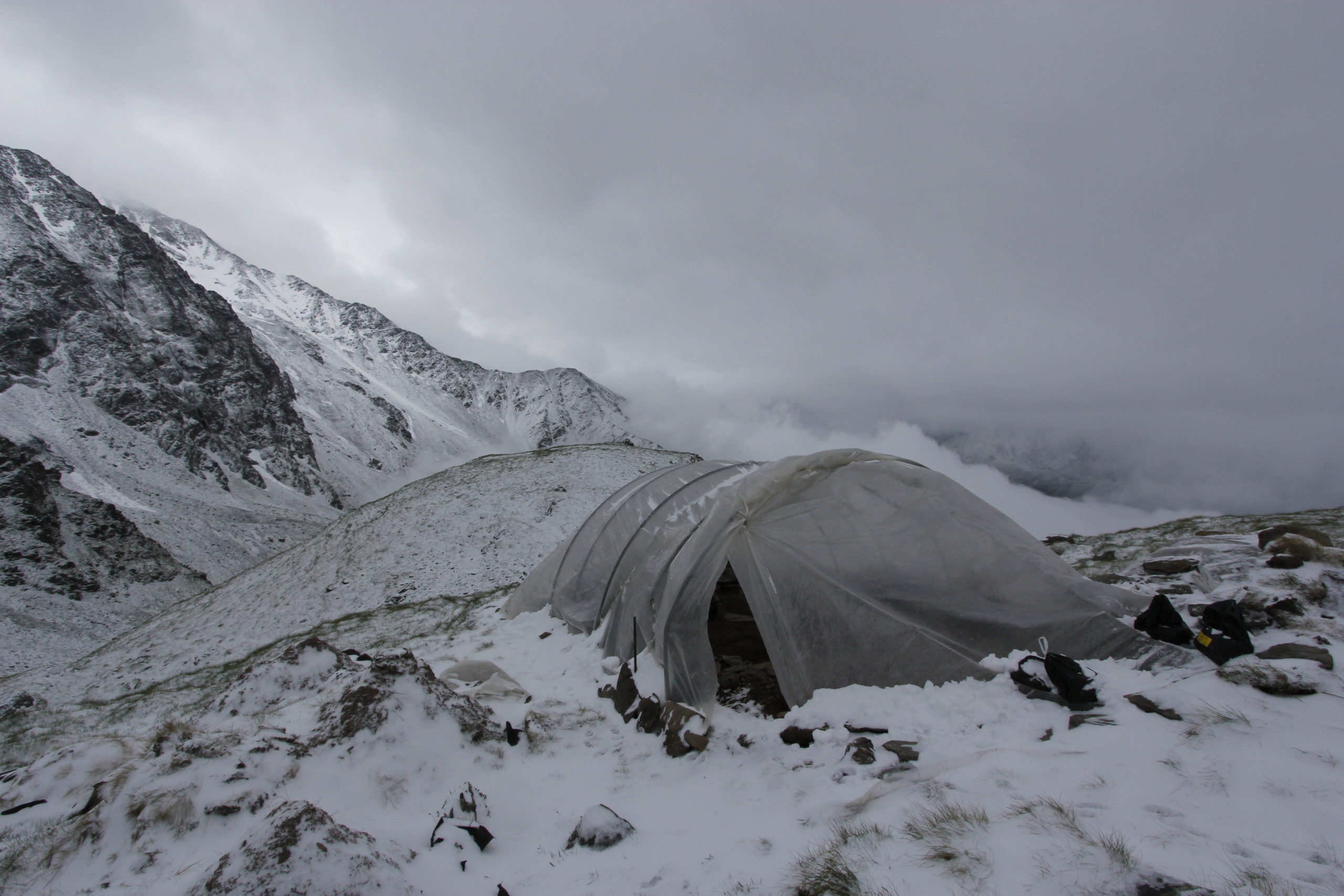
Fig. 3
Even in July, there is no guarantee against bad weather! Luckily, the tarpaulin protects the excavation that is in progress. © RAMHA
Campaigns carried out from 2014 to 2016
For the 2014-2016 campaigns, two containers were brought up by helicopter to store tools and provide accommodation for the small excavation team (six to eight people). The campaigns were carried out over six weeks in 2014 and 2015, with the final one in 2016 lasting just three weeks. While the hike uphill meant that the team had to carry a five-day load of food, the descent was made with a rucksack loaded with sediments collected during the excavation, which were then sieved on the lowlands. This alone will enable us to identify the faunal remains (fragments of charred bone), plant remains (seeds, grains), and charcoal bearing witness to the provisioning of the Wall’s occupants.
05.08.2009
Excavation diary
Team: 2 people.
Weather: average to good, still cloudy in the morning, persistent mist, then clear skies.Work carried out: the second stage of excavation in sounding SD001, excavation of the demolition of a building, discovery of a dry-stone wall running east/west (UT07) and a layer of hearth rubble (UT03) on the upper side of the wall, documentation of the level achieved.Findings: A Roman shoe nail was discovered on the surface of layer UT03.Miscellaneous: personal equipment belonging to the team members can be put out to dry in the afternoon.
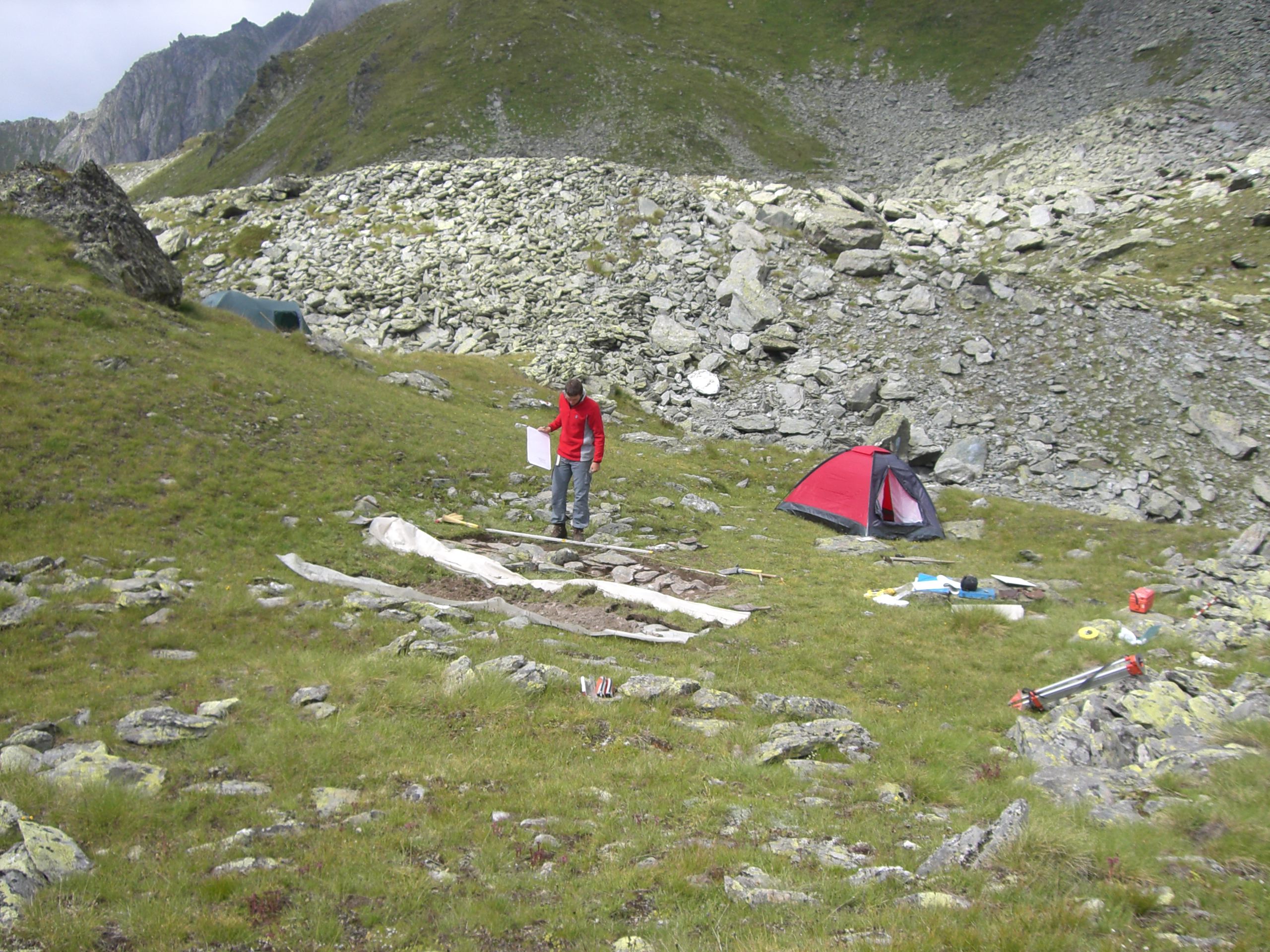
Fig. 4
Cool nights in tents, warm headgear recommended.
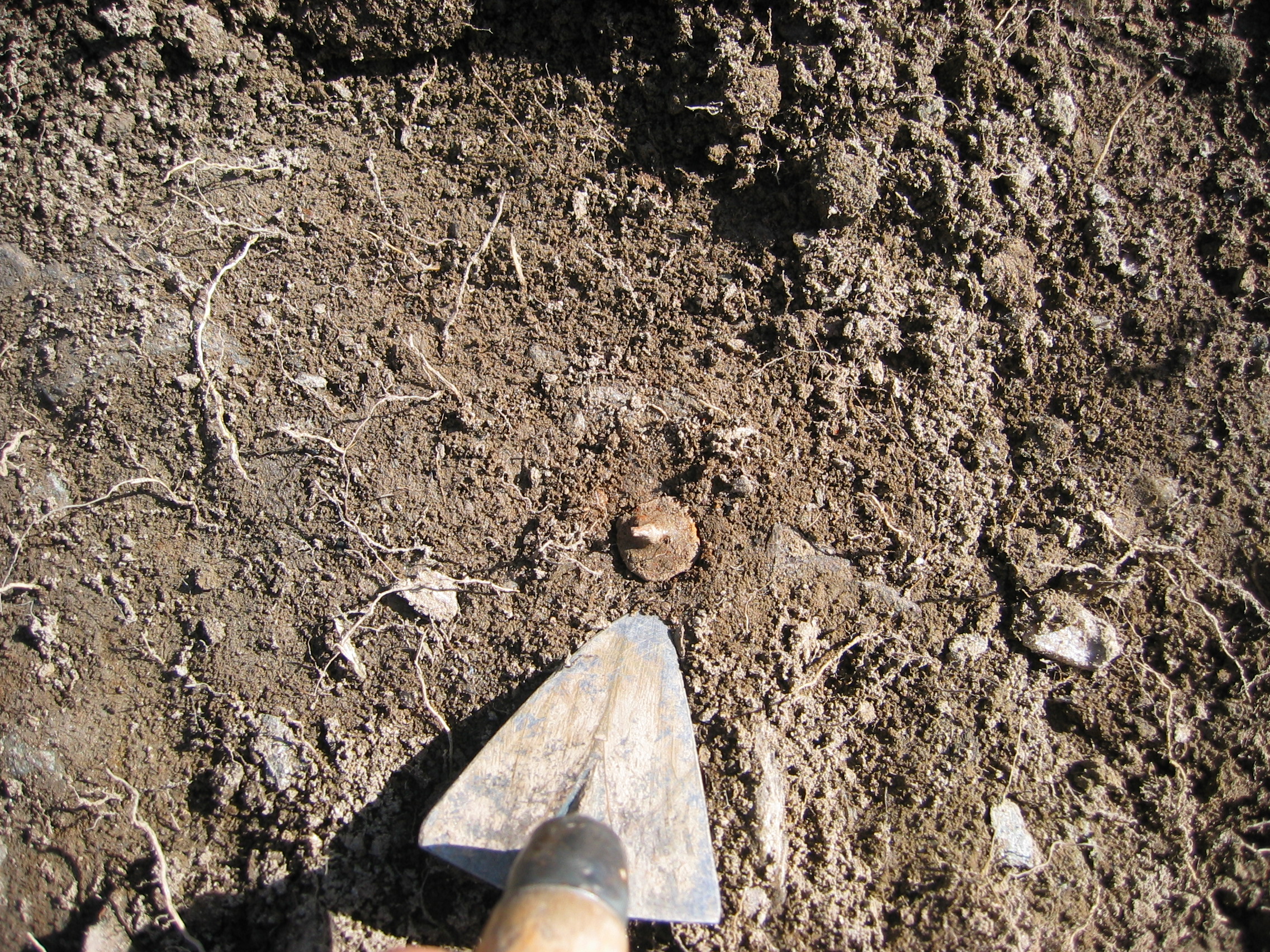
Fig. 5
A Roman shoe nail, victory!
Since when is the site known?
The anomaly of the topography represented by the Wall was identified as early as 1878 when it was referred to as a “ruin.” Théodore Lattion (1913-2015), a scholar from Liddes, first named the site in an unpublished memoir called Reflections about Annibal’s Wall (1983). During his observations, he surprisingly overlooked an engraved inscription inside one of the shelters, a key figure of the site. It was only in 2005 that it was noticed by Anne-Françoise Quartier-la-Tente during a hike. Her husband, Vincent Quartier-la-Tente, a self-taught historian like Théodore Lattion, to whom he was close, then undertook an initial deciphering of the inscription.
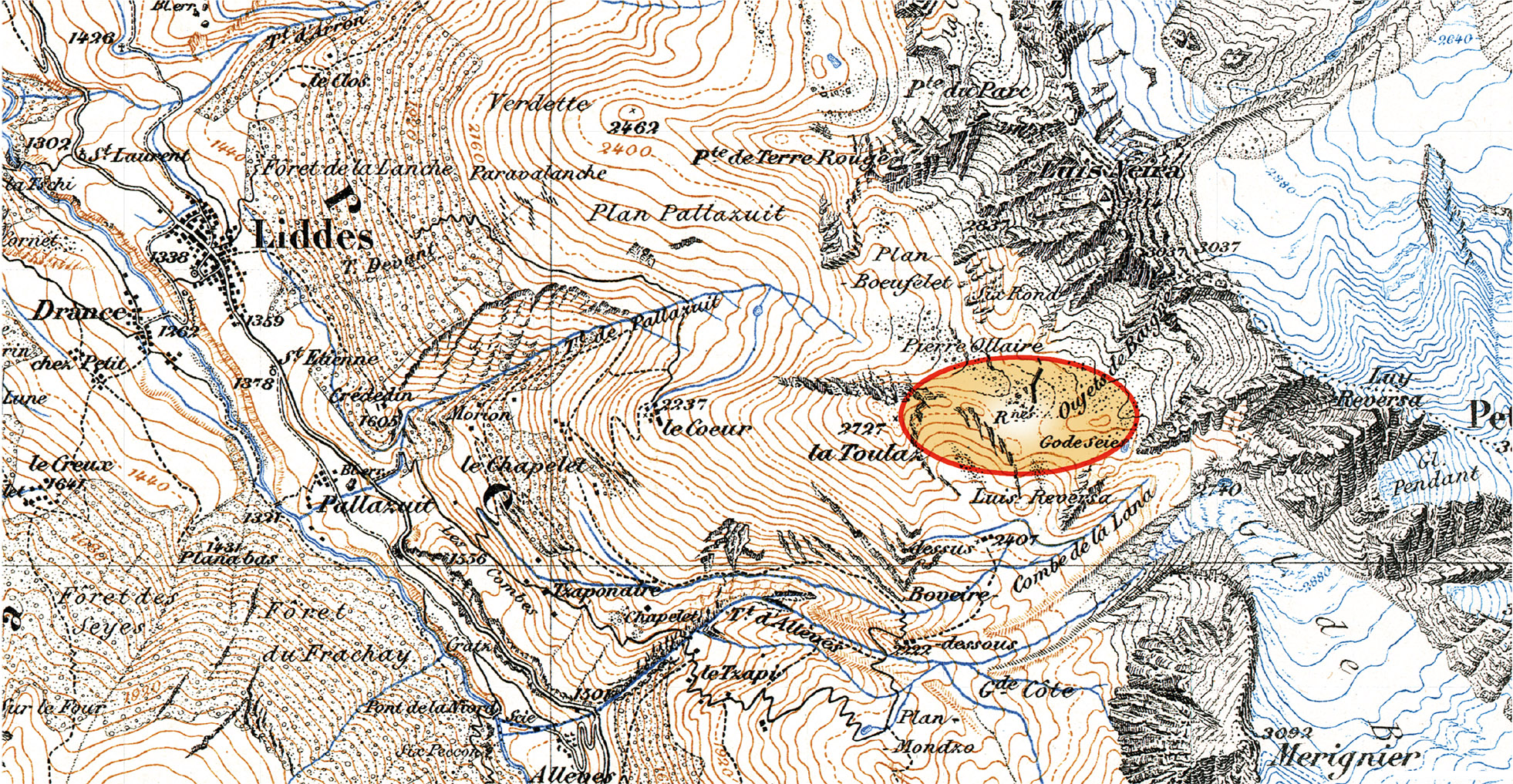
Fig. 6
In 1878, the Siegfried Atlas mentions “ruin” (Rnes) at the archaeological site, as well as a broken line representing the wall. These indications disappear in the 1906 reprint. Scale 1:25’000. © swisstopo
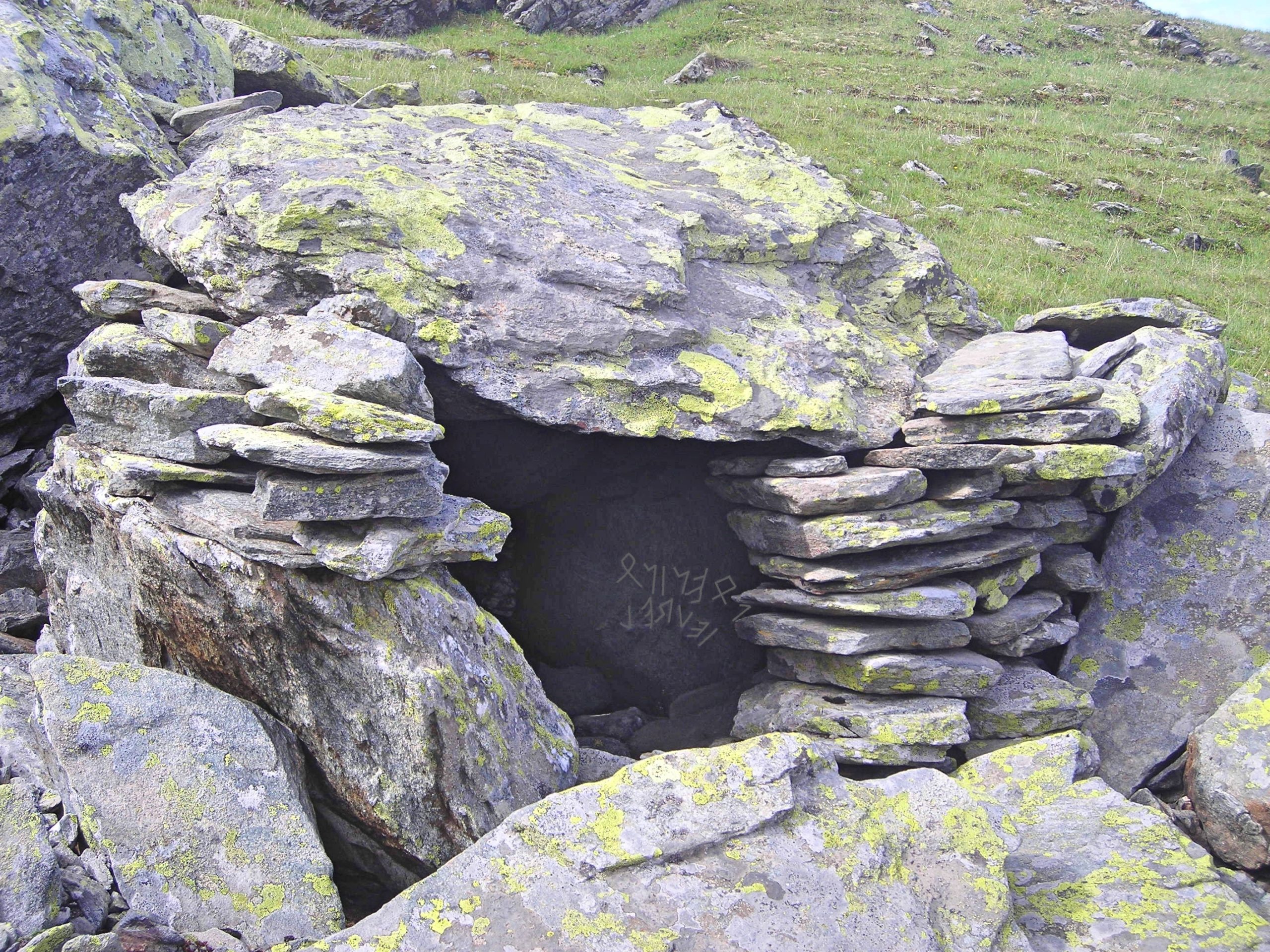
Fig. 7
The shelter housing the inscription dedicated to Poeninos. It reads from right to left. © RAMHA
A very old inscription
Vincent Quartier-la-Tente recognized that lettering from the Lugano alphabet was used for this inscription, but he could not offer a definitive interpretation. A round table of specialists in epigraphy (the study of inscriptions) was convened to shed light on the issue in 2016: it is a votive inscription addressed to Poeninos, an alpine deity worshipped by the local inhabitants. Poeninos was associated with Jupiter in Roman times, and a temple in his honour was built on the Great St Bernard Pass.
What makes this inscription so extraordinary is that it is one of the earliest in this part of the Alps. It marks the adoption of writing in the region and thus its entry into history.
The report of its discovery to the cantonal authorities was one of the triggers for archaeological investigations in 2006. In 2011, the RAMHA association (Association for Archaeological Research on the Hannibal’s Wall) was founded, and a multidisciplinary research program was established.
Well worth the effort!
As you continue on your way, you’ll cross the Plan Beussolet and then an expanse of scree until you reach the eastern ridge of the Pointe de Toules. This is the north-western end of the Mur. This section is poorly preserved, and the nature of the soil makes it difficult to recognise. However, if you continue along the ridge for almost a hundred metres, you can distinguish the first corner of the enclosure, which forms a kind of bastion. This is where the shelter with the inscription is located.
Enjoy the rest of the climb!
EASY LANGUAGE
You are at the Alpage duCoeur. From here, archaeologists went up to the Hannibal Wall. They studied the archaeological site from 2006 to 2018. The most important discovery is an inscription engraved on a rock. It is the oldest inscription which can be seen where it was discovered in the canton of Valais. It speaks of a god called Poeninos. Poeninos was a mountain god for the people who lived there 2000 years ago. The Romans called Poeninos Jupiter. Jupiter is the king of the gods, the sky, and the thunder.
Conception and design © RAMHA, Romain Andenmatten, UNIL, Michel Aberson, ArchaeoConcept Sàrl, Leana Catalfamo
Graphics © Chab Lathion
English translation and review: Cynthia Dunning, Emma Bonvoisin
Easy to read proofreading in English © will come soon